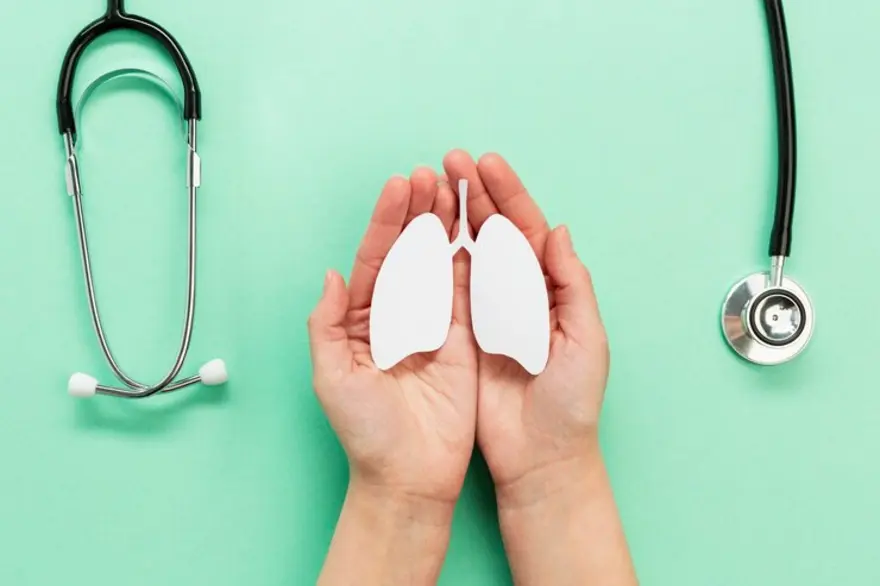Preventive Healthcare
Acromegaly: A Comprehensive Guide Explaining a Growth Hormone Disorder
357 Views
0

What is acromegaly?
Acromegaly is an uncommon hormonal condition characterised by an overproduction of growth hormone, resulting in abnormal growth, particularly in the extremities such as the hands and feet.
Who does acromegaly affect?
Acromegaly can impact individuals of any age, though it is typically identified more frequently in middle-aged adults, with an average age of diagnosis around 40 years.
How common is acromegaly?
Acromegaly is a rare condition, occurring in 3 to 14 individuals per 100,000, or approximately 50 to 70 individuals per million.
How does acromegaly affect my body?
Acromegaly causes the accelerated growth of body tissues and bones, resulting in the gradual emergence of disproportionately large hands and feet, accompanied by a range of additional symptoms over time.
What causes acromegaly?
- Acromegaly causes include overproduction of growth hormone (GH) for an extended period.
- The primary acromegaly cause in adults is usually a benign pituitary tumour (adenoma) that produces excess GH.
- Symptoms such as headaches and vision problems may arise due to the tumour pressing on nearby brain tissues.
- In rare cases, non pituitary tumours elsewhere in the body, such as the lungs or pancreas, can cause acromegaly by secreting GH or growth hormone-releasing hormone (GH-RH).
What are the symptoms of acromegaly?
- Common acromegaly symptoms include enlarged hands and feet, leading to difficulties in wearing previously fitting rings and shoes.
- Gradual alterations in facial shape may occur, such as a protruding lower jaw and brow bone, enlarged nose, thickened lips, and widened spacing between teeth.
Acromegaly symptoms can vary among individuals and may encompass:
-
- Enlargement of hands and feet.
- Increased size of facial features like bones, lips, nose, and tongue.
- Coarse, oily, thickened skin.
- Excessive sweating and body odour.
- Presence of skin tags.
- Fatigue, muscle weakness, and joint pain.
- Deepened voice due to enlarged vocal cords and sinuses.
- Severe snoring from upper airway obstruction.
- Vision difficulties and persistent or severe headaches.
- Irregular menstrual cycles in women and erectile dysfunction in men.
- Decreased libido.
How is acromegaly diagnosed?
Without relying on specific tests, here's how acromegaly diagnosis is done:
- Patient History: The healthcare provider reviews medical background, focusing on symptoms like changes in appearance, joint discomfort, or vision issues.
- Physical Examination: Conducted to identify signs such as enlarged extremities, facial alterations, and skin abnormalities.
- Symptom Observation: Diagnosis inferred from symptoms and physical characteristics, although they may be subtle or overlap with other conditions.
- Clinical Assessment: Diagnosis based on the healthcare provider's judgement, considering characteristic features and suggestive symptoms of acromegaly.
What tests will be done to diagnose acromegaly?
Acromegaly diagnosis involves various assessments and tests:
- Blood tests to measure growth hormone (GH) levels, often supplemented with a glucose tolerance test.
- Testing for insulin-like growth factor 1 (IGF-1) to assess abnormal growth.
- Imaging studies such as X-rays, MRI scans, and sonograms to identify excess bone growth and detect tumours.
- Following diagnosis, MRI and CT scans aid in locating and determining the size of pituitary tumours.
- If no pituitary tumour is found, doctors may search for tumours elsewhere in the body contributing to excessive GH production.
- Despite estimated prevalence rates, acromegaly often goes undiagnosed, leading to potential underestimation of affected individuals.
How is acromegaly treated?
Acromegaly treatment typically involves a combination of surgical intervention and medications.
Surgery for Acromegaly:
Transsphenoidal surgery: This common approach involves removing the pituitary tumour through the nasal passage to extract as much of the tumour as possible while preserving normal pituitary function.
Medications for Acromegaly:
- Somatostatin analogues: Drugs such as octreotide and lanreotide are administered via injections to reduce the secretion of growth hormone from the pituitary gland.
- Dopamine agonists: Medications like cabergoline may be used, particularly if the tumour secretes both growth hormone and prolactin.
- Growth hormone receptor antagonists: Injectable drugs like pegvisomant block the action of growth hormone, lowering IGF-1 levels and managing symptoms.
- Other medications: In some cases, combinations of drugs like cabergoline or pegvisomant with somatostatin analogues may be prescribed to achieve better control over growth hormone and IGF-1 levels.
Other acromegaly treatments include Radiation Therapy:
Radiation therapy may be considered if surgery is not feasible or if the tumour persists after surgery. It involves targeted radiation to shrink or destroy tumour cells.
Stereotactic radiosurgery (gamma knife) delivers focused radiation to the tumour, minimising damage to surrounding tissues.
Is acromegaly curable?
In certain cases, acromegaly can be cured, although not in all instances. Surgical removal of a pituitary tumour causing acromegaly yields approximately an 85% success rate for small tumours and around 40% to 50% for large tumours.
What is the outlook for acromegaly?
The outlook for acromegaly varies based on factors such as treatment effectiveness and the presence of complications. Surgical removal of pituitary tumours, especially small ones, can result in a favourable outcome for many patients. Long-term management through medications or radiation therapy helps control symptoms and prevent complications.
What are the complications of acromegaly?
Untreated acromegaly can result in various complications, including:
- Cardiovascular issues
- Arthritis
- Diabetes and impaired glucose tolerance
- Hypertension
- Vision impairments
- Additionally, the condition increases the likelihood of developing colon polyps, which are small growths on the colon lining and can potentially lead to colorectal cancer.
When to see a doctor?
If you notice any of the following symptoms associated with acromegaly, it's recommended to consult a doctor:
- Observable alterations in physical appearance like enlarged hands, feet, or facial features.
- Ongoing joint pain or discomfort.
- Vision difficulties, including changes in peripheral vision or trouble focusing.
- Symptoms indicative of hormonal imbalances, such as fatigue, excessive sweating, or irregular menstrual cycles.
Conclusion
Acromegaly, a rare hormonal disorder, leads to symptoms like enlarged extremities, facial features, joint discomfort, and vision issues. Diagnosis involves a medical history review, physical examination, and tests. Acromegaly treatment includes surgery and medication, with long-term management often necessary. Untreated acromegaly can cause complications like cardiovascular problems, arthritis, and increased cancer risk. We at Metropolis Labs provide accurate health check-ups and testing facility. Our labs are successfully functioning all across India. You can avail our at-home testing facilities, if you are not willing to step out of your house. Schedule your test today with us.
 Home Visit
Home Visit Upload
Upload













1701259759.webp)









 WhatsApp
WhatsApp